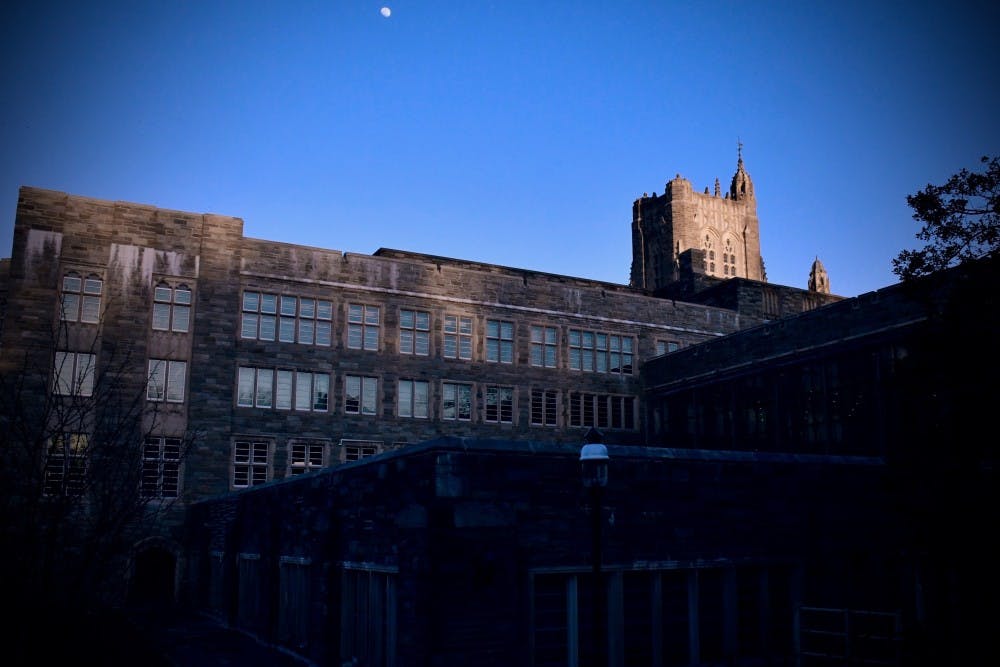Earlier this month, the University finished the Firestone Library renovation, after more than a decade of work. The Library, stocked with chic crimson chairs and new fluorescent chandeliers, now meets the demands of the 21st century. Despite such superficial changes, the University has neglected the Library’s most prominent feature — its namesake.
Harvey Firestone, the American magnate who financed the eponymous Harvey S. Firestone Memorial Library, owed much of his fortune to the natural wealth of Liberia, where his business venture, the Firestone Tire and Rubber Company, opened an enormous rubber plantation in 1926. For nearly 100 years, the Firestone plantation, which continues to face accusations of human rights abuses, has exacted a horrific human toll on Liberians.
For decades, Firestone’s Liberian laborers, many of whom were forcibly relocated to the site, have tapped rubber without basic protections. I have written about the plantation’s sordid underside before, and I refer curious readers to my earlier work. In short, laborers have faced devastating punishments for failing to collect enough rubber. For many, Firestone is their only source of housing and medical care. Although working conditions remain opaque, a 2006 lawsuit alleged that employees face “the modern equivalent of slavery.”
I write today not only to reiterate my previous points but also to encourage the University to take advantage of this moment, as 10 years of renovations come to fruition. I ask that the University challenge and investigate Firestone’s legacy on this campus and disclose its historical and contemporary ties to the Firestone Company.
A formal reckoning would accord with the renovation’s mission. According to the Library’s website, the project was “focused on creating a building that is well-suited to support modern library services and contemporary approaches to scholarship.” Our conception of history has evolved since Firestone made his donation. We now question assumptions that would have been unassailable to our predecessors. “Contemporary approaches to scholarship,” then, oblige us to examine Firestone.
Furthermore, the library renovations have raised unresolved quandaries. Last year, retreating scaffolding revealed the newly restored Dulles Library of Diplomatic History, an opulent, octagonal chamber on Firestone’s first floor. The cavernous room originally housed the papers of diplomat John Foster Dulles, Class of 1908.
As Secretary of State, Dulles furthered Firestone’s neo-imperialist interests in Liberia. In 1954, he drafted a confidential memorandum instructing the State Department to arrange for Liberian President William Tubman to visit the United States. Dulles acknowledged that his instructions came at the behest of Harvey Firestone, Jr., Class of 1920, who wished to host Tubman as “his guest” in Akron, the site of Firestone Company headquarters.
In the same document, Dulles stressed the importance of appearing to support an independent Liberia, since the issue resonated with African American voters. Dulles evidently knew that emancipated American slaves founded Liberia in 1816.
Then-Ambassador to Liberia Jesse Locker went even further, arguing that the optics of Tubman’s visit would “no doubt tend to have our people [African Americans] return to the Republican Party.” Of course, Locker and Dulles never wanted an independent Liberia, as their collusion with the Firestone Company should make clear.
The hypocrisy of ignoring Dulles and Firestone’s past is patent. Since the Library was built, University officials have waxed poetic about its high intellectual aspirations. When President Harold Dodds, Graduate Class of 1914, laid the Library’s cornerstone in 1948, he declared that within a library, “the miracle of imagination [is] kindled, prejudice thrown overboard, dogma rejected, conviction strengthened, perspective lengthened.” Those noble aims compel us to investigate the world around us, even if our inquiry implicates their benefactor.
To be sure, Firestone’s legacy is not monolithic. He donated a million dollars to build a world-class research library, a gift that benefits all Princeton students. Today, the Firestone Company supports, among other beneficial causes, the fight against Ebola. Our examination, then, should account for Firestone’s human complexity.
In recent years, Woodrow Wilson’s lionized legacy has rightly come under scrutiny, given the racism he practiced as president. Our conception of who Wilson was, and how he ought to be remembered, has become more nuanced. Surely we can hold Firestone to the same level of intellectual and moral evaluation.

To start, I suggest the University research and organize an exhibit about the Firestone plantation. It could be held in the Ellen and Leonard Milberg Gallery, set to open on Firestone’s first floor next month. That step, however, should complement a more critical and longer-term evaluation of Firestone’s legacy.
To paraphrase President Dodds, we now know that the pursuit of truth requires us to cast prejudice aside, to spurn dogma, to expand our perspective. If the University wishes to make good on its words, it must examine Firestone’s enduring presence on our campus.
Jon Ort is a Managing Editor of The Daily Princetonian. This piece represents the views of the Managing Editor only. He can be reached at jaort@princeton.edu.








